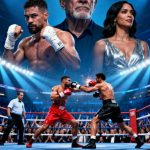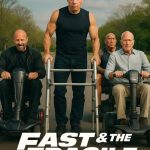⚡ “ZACK SNYDER’S JUSTICE LEAGUE PART II (2026)” — Gods Among Ruins

When the world falls silent and hope flickers in the dark, Zack Snyder’s Justice League Part II erupts like a thunderclap across the cinematic heavens. Snyder returns to the battlefield he built — a mythic realm where gods bleed, mortals rise, and destiny demands sacrifice. This is not just a sequel; it’s a resurrection — a symphony of vengeance, valor, and vision.

From its opening moments, the film declares war on mediocrity. Gotham lies fractured, Metropolis in mourning, and the Earth itself trembling beneath the shadow of a cosmic terror. But out of the wreckage, Snyder gives us something rare: heroes defined not by power, but by pain.
Ben Affleck’s Batman stands as the film’s dark conscience — older, bruised, but sharper than ever. His mission has evolved from vengeance to faith; he no longer fights to punish the world but to protect what’s left of it. There’s a gravitas in every stare, every strategy, every whispered promise to keep the line unbroken.

Henry Cavill’s Superman rises like a phoenix — reborn and burdened. His return isn’t triumphant; it’s tortured, a meditation on identity and purpose. Cavill delivers a performance that balances divine might with human vulnerability, a symbol not of perfection, but of perseverance. When he takes flight, you don’t just see hope — you feel it.
Gal Gadot’s Wonder Woman remains the film’s heart — a warrior-poet wielding grace as fiercely as her blade. Snyder gives her moments of pure cinematic majesty: charging through fire, rallying soldiers, and standing unyielding against gods and monsters alike. She is the bridge between myth and man, a symbol of compassion forged in war.
And then there’s Ray Fisher’s Cyborg, whose journey toward acceptance becomes the film’s emotional nucleus. His humanity — fractured but unbroken — gives the chaos meaning. Fisher delivers with quiet intensity, making Cyborg the soul Snyder always intended him to be.

Visually, Snyder’s signature style reigns supreme. The screen becomes a cathedral of destruction and divinity — every frame a painting, every explosion a hymn. The scale is biblical, but the storytelling remains intimate. It’s about finding light in the ruins, family in the fight, and faith in the impossible.
The villain’s presence — cosmic, monstrous, unrelenting — pushes the League to its brink. Yet Snyder refuses to reduce his heroes to mere soldiers. They are symbols — living myths wrestling with mortality and moral consequence. The battle sequences are not just displays of strength; they are acts of faith.
What truly elevates Justice League Part II is its soul. Beneath the thunder, Snyder’s film speaks to legacy — to the eternal struggle of heroes who fight knowing they might lose. It’s tragedy and triumph intertwined, a reminder that even gods must bleed for mankind to believe.
By its final act, Snyder crafts something transcendent. As the League stands battered but unbowed, we realize this isn’t a story about saving the world — it’s about earning it back.
Related movies:











